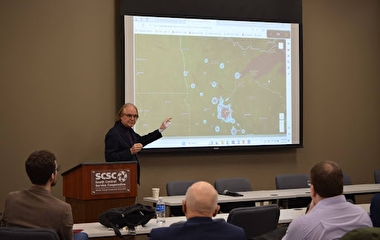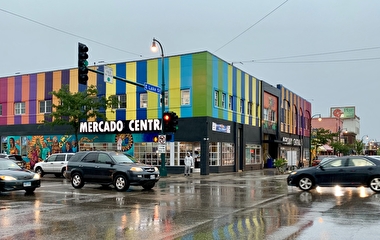In American Indian reservations and communities, motor vehicle crash (MVC) fatalities remain a serious concern. Vehicle crashes are one of the highest causes of injuries to American Indian and Alaskan Native populations, and their MVC fatality rate is the highest of any US ethnic or racial group.
To understand and address this high-stakes issue, an exploratory study conducted by Roadway Safety Institute (RSI) researchers considers one potential factor in the high fatality rate: the quality of emergency medical services (EMS) for MVCs in American Indian reservations and communities.
“Tribal transportation professionals have said that exploring the role of EMS in the high motor vehicle fatality rate in their reservations and communities is a high-stakes priority for research,” says Kathy Quick, an associate professor with U of M’s Humphrey School of Public Affairs and one of the study’s principal investigators. “In response, we conducted a national survey of transportation safety specialists from tribal governments, first responders, and other key stakeholders who serve reservations and American Indian communities to better understand the EMS issues from the perspectives of people who have valuable knowledge and experience with these issues.”
To generate their findings and recommendations, researchers analyzed the responses of 189 study participants. This included assessing factors related to the quality of EMS response as well as comparisons between perceived EMS quality for American Indian reservations and communities compared to the surrounding areas. After performing the data analysis, researchers discovered three key findings with recommendations.
First, researchers found a bottleneck at the initial stage of activating EMS response. “When we asked if cell phone signal was adequate for 911 calls, only 42 percent of respondents agreed,” says Guillermo Narváez, founder and principal at Proxemic Insights and study co-investigator. “Because a 911 call is usually the first step in activating EMS response to a motor vehicle crash, with all subsequent steps hinging on this step, this bottleneck is all the more troubling.”
The second key finding was elevated EMS challenges in the Pacific Northwest and Alaska. In these areas, the time to transfer MVC victims to emergency rooms on average exceeded the “golden hour” that is so important for survival and good outcomes following a traumatic injury. Lastly, researchers found greater optimism among transportation specialists who work for tribal governments. “We found that study participants from tribal governments consistently had more optimistic views about roadway safety and the ability of EMS to adequately respond to emergencies in reservations than study participants without tribal government affiliation,” Quick says.
The team says additional research is merited on dispatch issues in reservations, EMS response times in the Pacific Northwest and Alaska, and differing perspectives between roadway safety stakeholders who are and are not affiliated with tribal governments. In addition, the researchers recommend identifying examples of productive interjurisdictional coordination.



